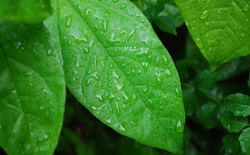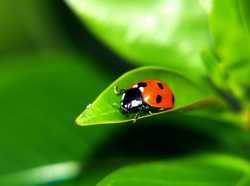
Are you hoping to get pictures where the main object is in sharp focus, with sharp outlines, sharp details, and no blurring? Performing with this degree of sharpness is one of the critical points to a truly eye-catching photo.
Taking razor-sharp photos is all about lowering the camera shake to a full minimum. There are a number of unique ways you can achieve this. Some apply to all situations, while others can only be used in certain situations, but each one helps cut down the amount of camera shake by a small portion. The more ways you can use, the sharper your photos will become.
General Tips for Maximum Sharpness
These suggestions can be used in all situations, and you should always keep them in mind, as they can make a great influence to any photo.
1. Use the Sharpest Aperture
Camera lenses can only produce their sharpest photos at one certain aperture. This is typically 2 to 3 stops down from the biggest aperture, placing it around f/8 on most lenses.
Your preference of aperture should be based on other factors first (such achieving an acceptable shutter speed and depth of field), but try to stay close to this ideal aperture wherever possible.
2. Lower The ISO
The higher your ISO speed, the more digital noise you'll get in your picture. This will result in sharp details to show up unclear, affecting on the overall sharpness of the image.
If achievable, always work with your camera's lowest ISO setting (typically around ISO 100 or 200), as long as it doesn't negatively affect other modifications like your shutter speed.
3. Switch The Image Stabilization On
Although vibration lowering procedures can cause problems when your camera is positioned on a tripod, they work wonders when you're holding it. In ideal circumstances they can give you as much as 3 added stops of exposure, which can make a big change between a photo which is fuzzy and one which is sharp.
More on photography & guides here.
Taking razor-sharp photos is all about lowering the camera shake to a full minimum. There are a number of unique ways you can achieve this. Some apply to all situations, while others can only be used in certain situations, but each one helps cut down the amount of camera shake by a small portion. The more ways you can use, the sharper your photos will become.
General Tips for Maximum Sharpness
These suggestions can be used in all situations, and you should always keep them in mind, as they can make a great influence to any photo.
1. Use the Sharpest Aperture
Camera lenses can only produce their sharpest photos at one certain aperture. This is typically 2 to 3 stops down from the biggest aperture, placing it around f/8 on most lenses.
Your preference of aperture should be based on other factors first (such achieving an acceptable shutter speed and depth of field), but try to stay close to this ideal aperture wherever possible.
2. Lower The ISO
The higher your ISO speed, the more digital noise you'll get in your picture. This will result in sharp details to show up unclear, affecting on the overall sharpness of the image.
If achievable, always work with your camera's lowest ISO setting (typically around ISO 100 or 200), as long as it doesn't negatively affect other modifications like your shutter speed.
3. Switch The Image Stabilization On
Although vibration lowering procedures can cause problems when your camera is positioned on a tripod, they work wonders when you're holding it. In ideal circumstances they can give you as much as 3 added stops of exposure, which can make a big change between a photo which is fuzzy and one which is sharp.
More on photography & guides here.


 RSS Feed
RSS Feed